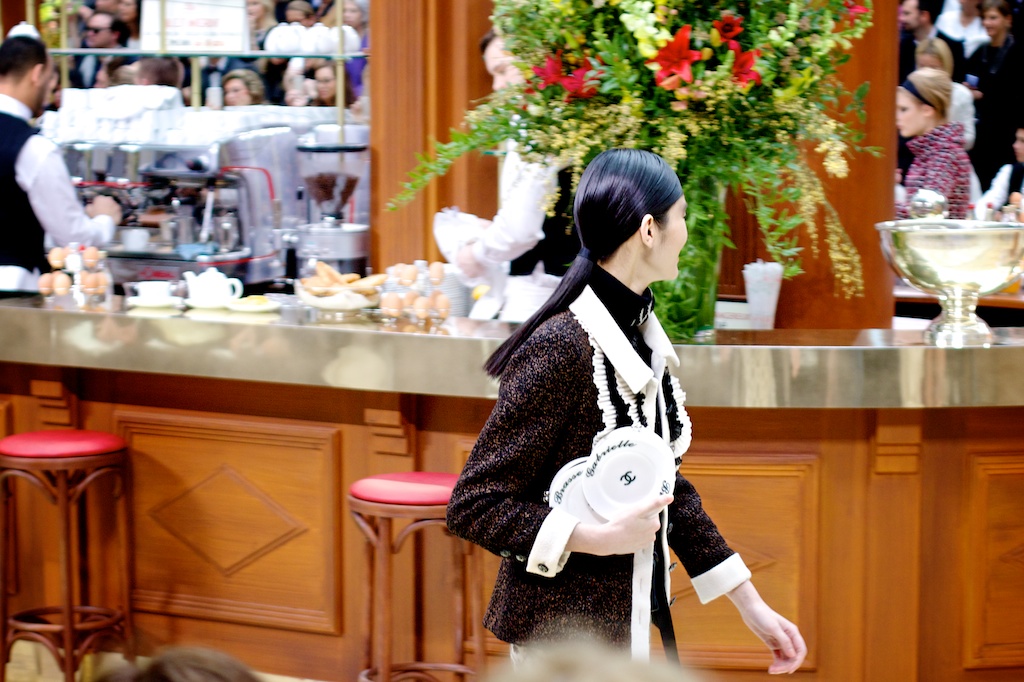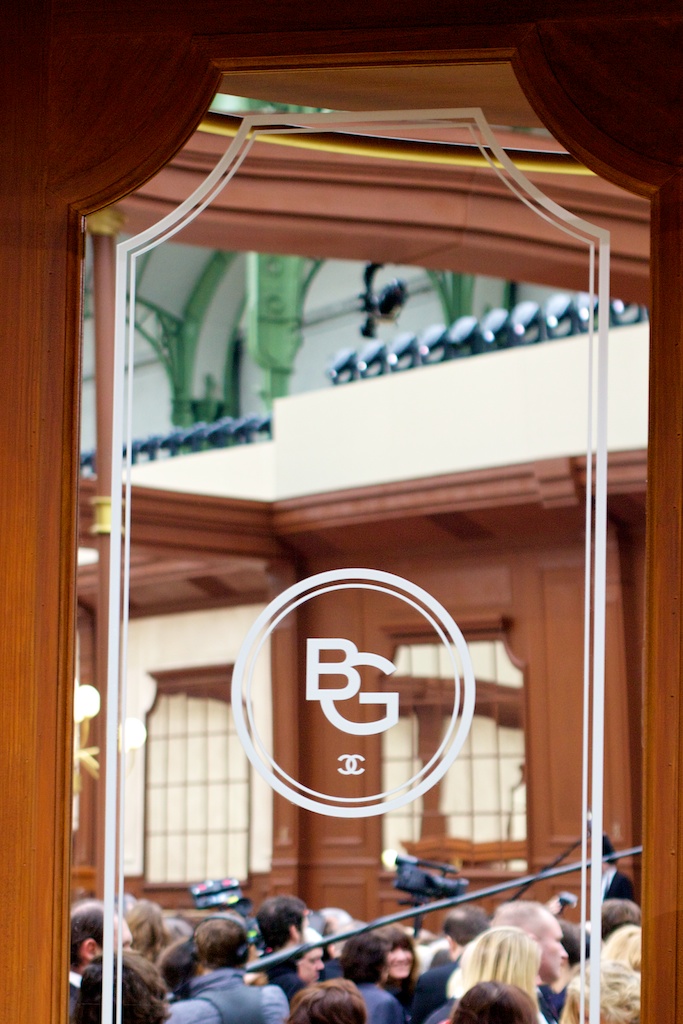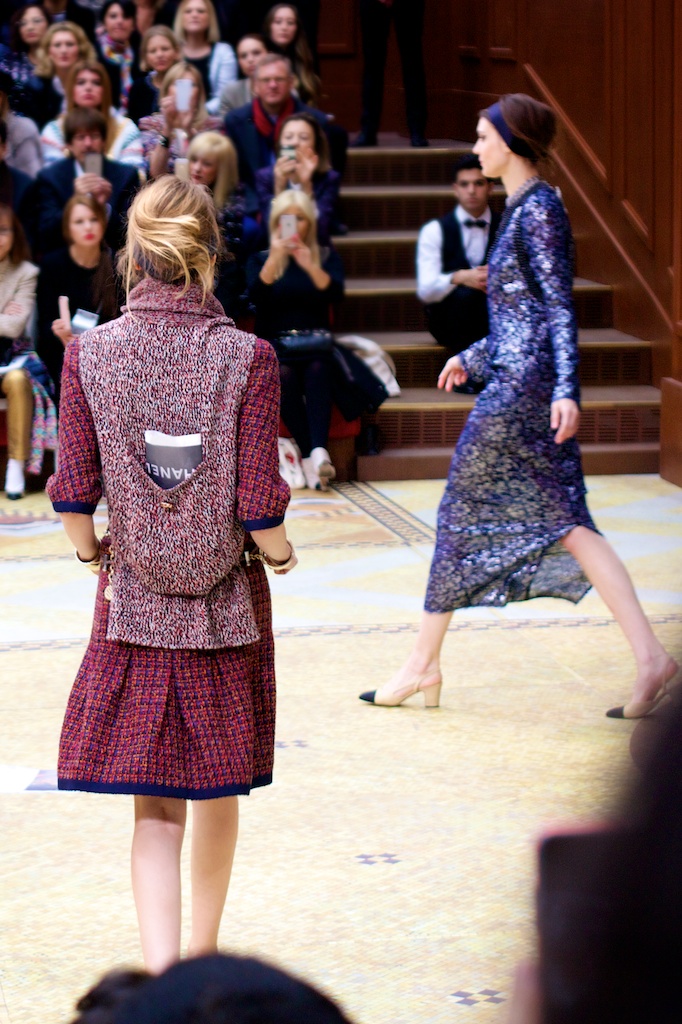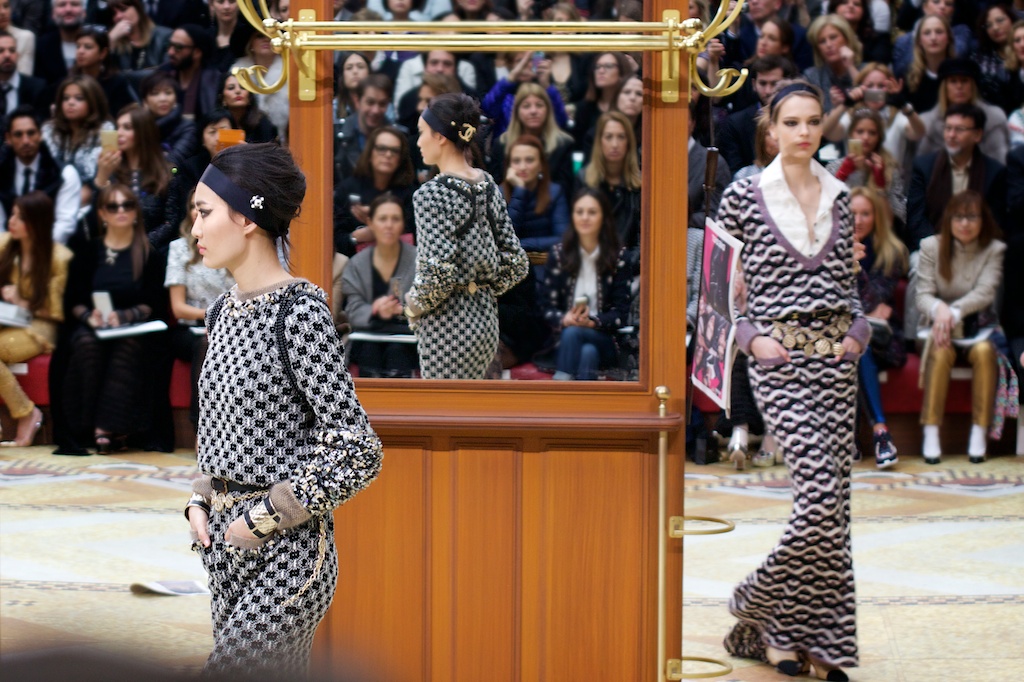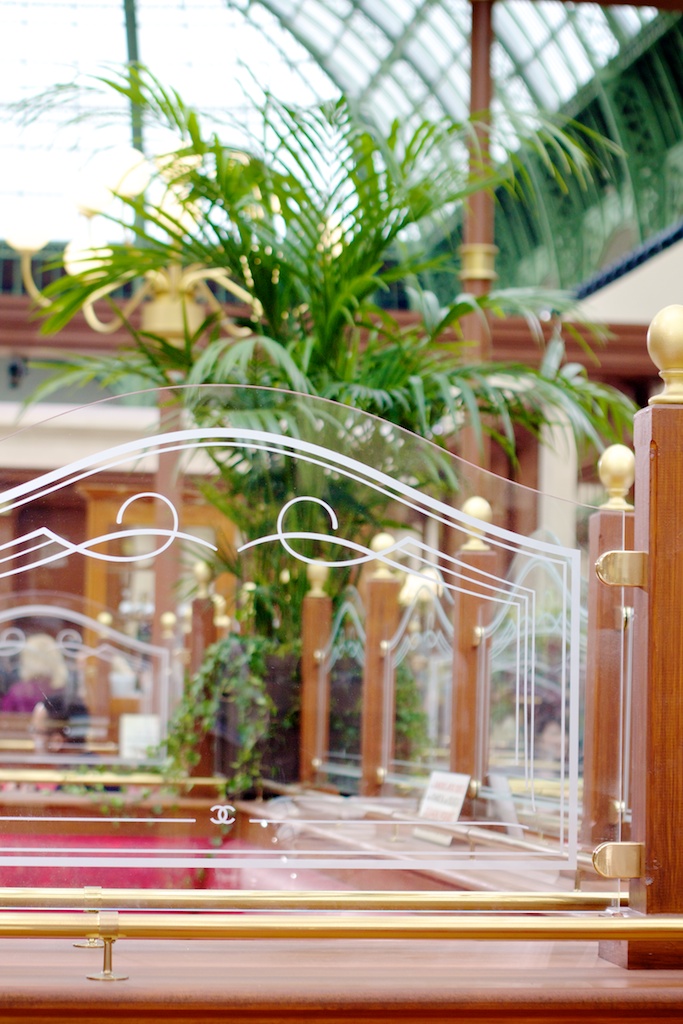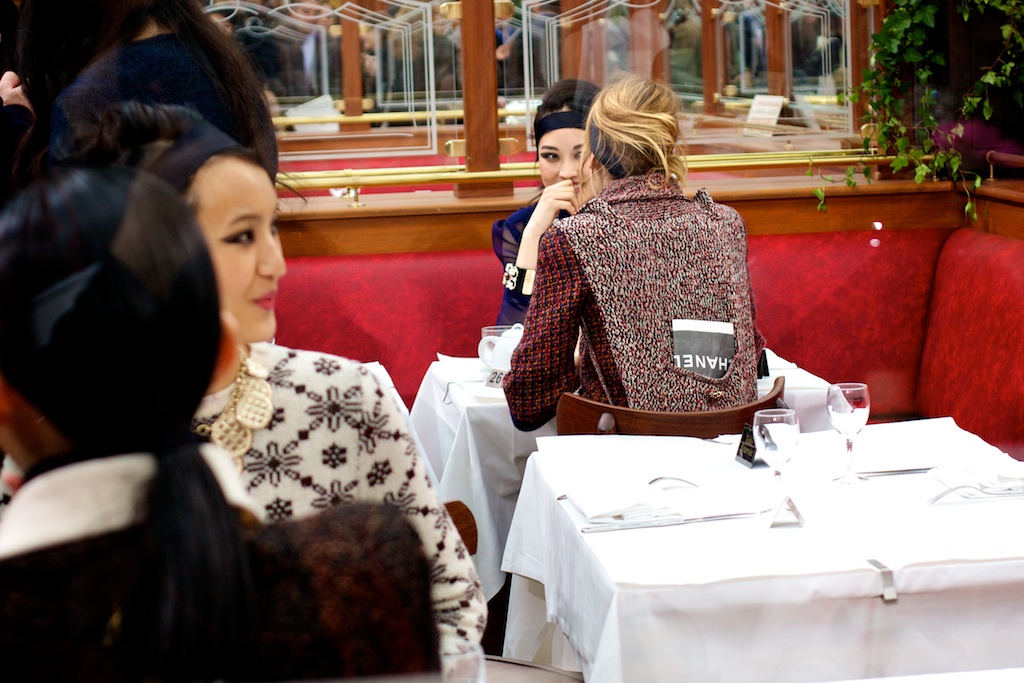A Chanel Act
Last month I read an article in The Wall Street Journal about the Parisian waiters, “In Defence of the Notoriously Arrogant French Waiter”. Without paraphrasing the article, it makes an interesting point on how serving tables in the Parisian brasserie is akin to theatre. The highly respected French waiters attend schools that include acting classes teaching the appropriate posture and the dance moves of waiting tables, i.e. how to balance stacks of plates and coffee cups with one hand, while opening a bottle with the other.
A card with a sketch of an authentic French waiter invited us “à la Brasserie Gabrielle”, and invited we were; a breakfast of choice is waiting for us upon arrival. Once again, Chanel has impressively transformed the enormous space of the Grand Palais into a world of their own. A grand bar dominates the centre stage, flanked by a smaller variation on each side. Several table-sections with red leatherette banquettes are connecting them. Together with tall flower decorations, mirrors, and faded tiles on the floor; this is a French brasserie just as we know it. As we arrive, the play is already in motion: guests are being served petit-déjeuner, whilst proud waiters are balancing champagne glasses and jus d’orange, navigating between white tablecloths.
A coffee and croissant later, we are being seated. The waiters, however, carry on with their usual routine. The revolving door starts spinning, and reveals one elegant Parisienne after another. A year ago, under the same dome, the models pretended to be grocery shopping, filling up their carts until all looks had been displayed; likewise in today’s role play, our Parisiennes for the day are not leaving the scene after their stroll around the restaurant. They take a seat and order a café, hang their coats up and read the newspaper, or join their chic girlfriends to take selfies. The clever trick this season, however, is that the models don’t leave when the music stops.
Instead of leaving as they would in a traditional fashion show, guests are actually invited to stay and enjoy the moment, while having a closer look at the collection. The show opened with sporty garments, bombers and parkas with rhinestones in tweed and plaid. Through inventive knits shaping backpacks, the accessories also demonstrate the sporty element. Eventually the
Models are posing in every angle of the set, while Karl Lagerfeld himself is standing behind the bar, serving answers to the many journalists on the other side of the counter.
So what message did Chanel convey last Tuesday morning in the Brasserie Gabrielle? There are two significant notions, and both lead back to the roots of the brand. Firstly, we are witnessing Chanel opening up and meeting its audience through an interactive fashion show. Contrary to the traditional runway show, where only the front row has the luxury of time and an ideal view to experience the looks up-close. Is it a sign that Chanel is looking at its original idea of brand positioning? This season’s approach effectively identifies with Coco Chanel’s vision of the brand. The marketing position of most current luxury brands contradicts the idea Gabrielle Chanel had for her brand initially; when her staff told her that they saw her designs in the windows of other shops and tailors, Coco was thrilled, as for her at one point every woman of every age would walk the streets of Paris in a Chanel suit, in all price ranges. She had never been more flattered.
Secondly, there is an evident parallel between the waiters and the models in this spectacle. In the same way French waiters have been taught to embody a character, models are equally challenged to step into a role and communicate the spirit of a multitude of collections through movement and body-language. For both, as in every traditional theatre, the dress is crucial. Chanel is pushing the delightful idea that fashion is a role-play, that clothes can give flesh to everyone’s character. Karl Lagerfeld called it the French collection. Who would say no to being Parisian for a day?
Text and photos / Mia Aadland Stølen
